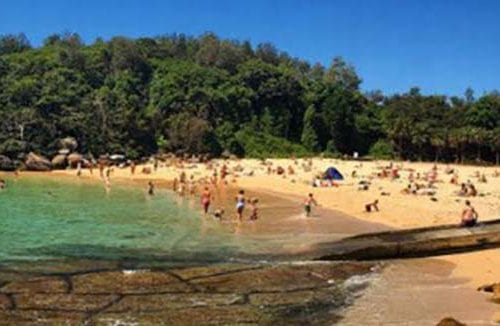Over the last few years Munda in the Solomon Islands has become one of the most popular dive destinations in the South Pacific. While Munda certainly has some incredible dives sites, what makes it extra special are its very unique dive sites.
We recently spent a week diving the wonderful dive sites of Munda with Dive Munda, staying at the comfortable Agnes Gateway Hotel. During our stay we dived all the signature dive sites that have made this area famous. We dived Shark Point to view schools of pelagic fish, mobula rays and sharks. We dived the World War II shipwreck the Kashi Maru, exploring every nook and cranny of this fascinating Japanese freighter.
We dived incredible walls at Haipe Reef and Secret Spot to see beautiful corals. We also dived sites with healthy hard coral gardens like Mbigo Mbigo and Marlon’s Crack. And finally we also dived some of the brilliant World War II planes that rest on the sea floor around Munda.
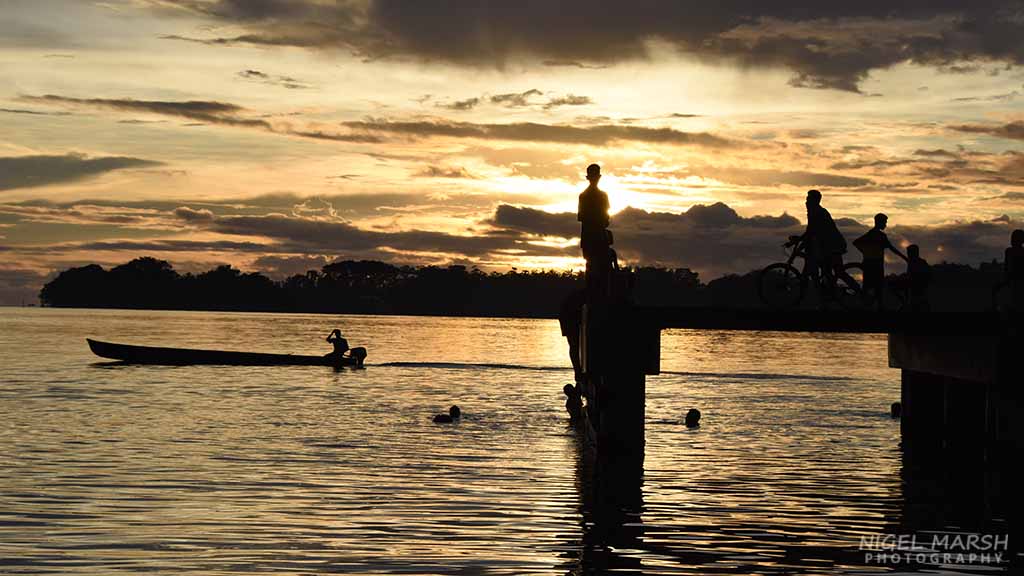
However, the team at Dive Munda, which have over thirty dive sites and are constantly finding new sites, also surprised us with some very unique dive sites. The first of these was the Cave of the Kastom Shark.
We had heard of this cave, but thought it was like other caves we had explored in the Solomon Islands, just a small ocean cave or a large crevasse. How wrong we were, as this is a true cave dive only for experienced divers.
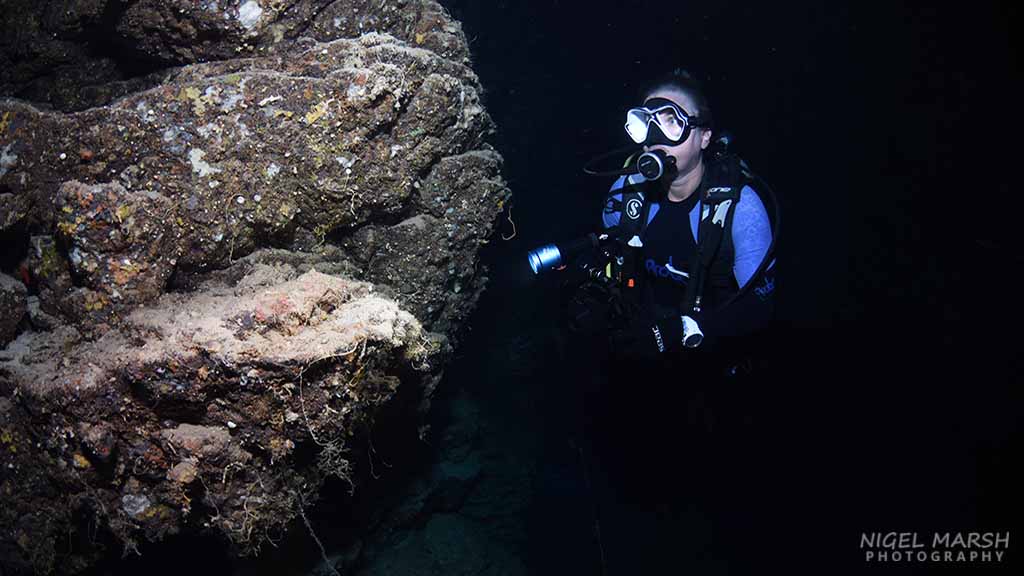
The dive starts on an island, after a short track through the jungle, where a small clear pool is located at the base of a rocky outcrop. Gearing up here we gently entered the water and looked down into a narrow passage dropping vertically into darkness. Before the dive we had a thorough briefing of what to do and what to expect, the main points being follow the guide, use the safety line if required and be careful of the silt – which is on the cave floor and also cascades off the walls and ceiling, dislodged by your bubbles.
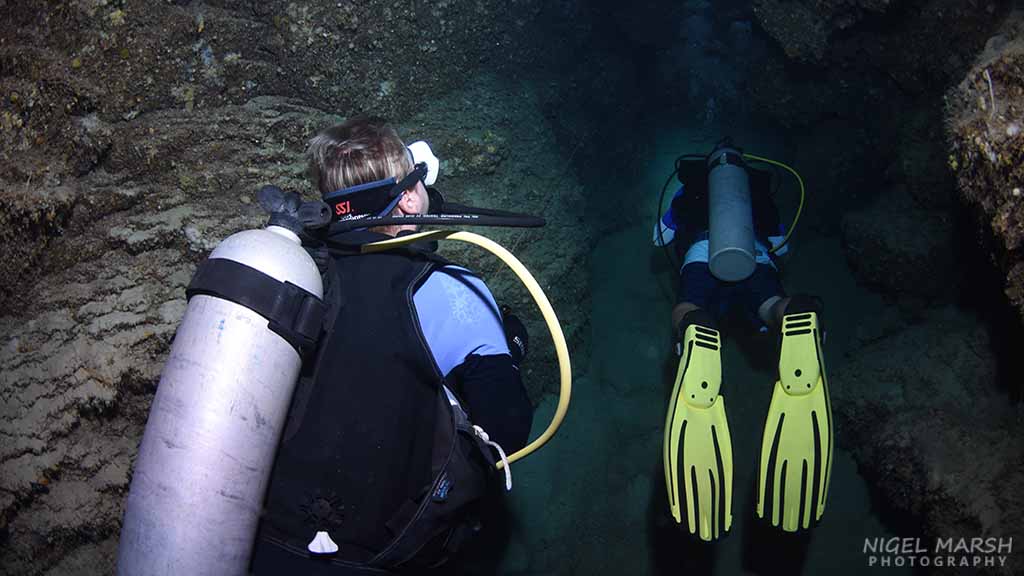
The first section of the cave drops to 20m and opens into a larger chamber. After a quick look here we then dived down a sloping narrow passage, following our guide deeper into the cave. In this section the visibility suddenly dropped to only a few metres, possibly stirred up by recent rains rather than the silt dislodged by our bubbles. Fortunately, it got clear again when we reached the next chamber. At this point we were at 32m, the deepest point of the cave. After another quick inspection around this chamber we started up, hitting the narrowest point of the cave, requiring us to squeeze over a boulder. Once passed this obstacle we could see a dim blue light, the cave exit on a reef wall. But before exiting we had a look around this last large chamber, which is home to squirrelfish and coloured by sponges. Our journey through the cave only took 15 minutes, but it was a very unique and memorable experience.
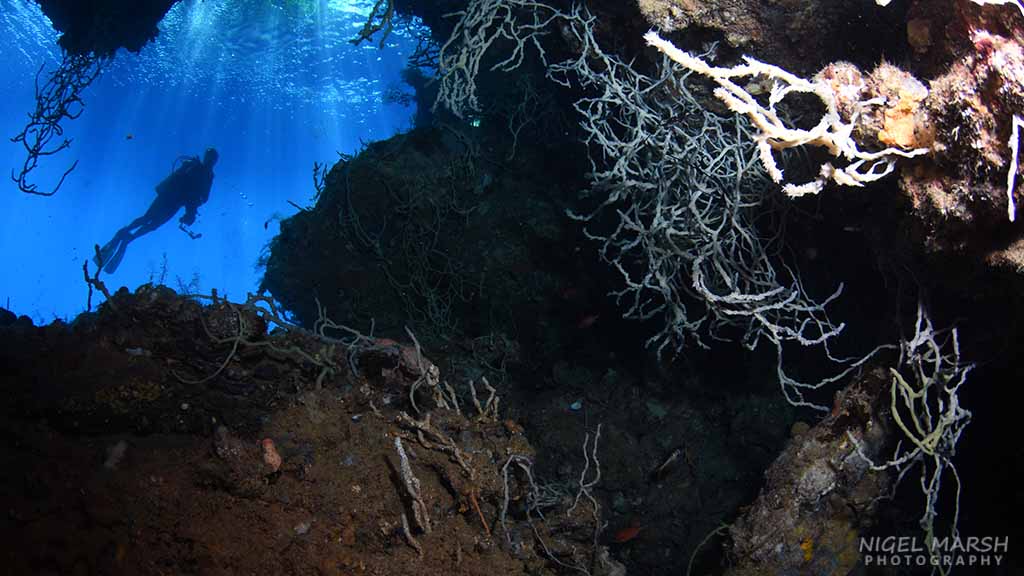
Our next unique dives were at two recently discovered dive sites, Langarana and Belo Belo. These two limestone islands are covered in dense jungle and have incredible wall dives on their open ocean faces, where we encountered sharks and schools of barracuda and trevally. But what makes them truly unique is found on their inner sheltered sides. Here are sheer walls with overhanging trees which shade the wall and allow beautiful corals and sponges to flourish in the shallows. It was simply breathtaking to be in only in a few metres of water and looking up to see overhanging branches with beams of sunlight shining through the leaves, while also marvelling at spectacular soft corals, gorgonians, whip corals and spaghetti sponges.
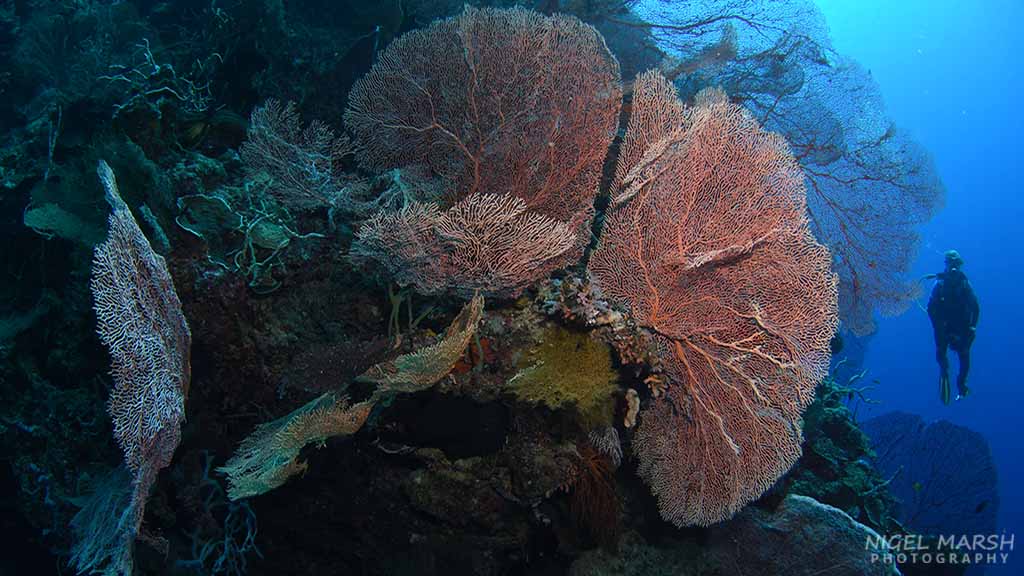
Dive Munda have some fascinating World War II plane wrecks for divers to explore, but one of them is truly unique, a Japanese Zero fighter plane. Only discovered two years ago, this plane rests in 16m on a sandy bottom and is almost intact. While other Zero fighter plane wrecks can be dived in the Solomon Islands, what makes this one unique is that it still has Japanese text on its side. Covered by sand, the writing has been incredibly well persevered. A translation of the text reveals that this plane was sponsored by Yong’an Textile, a Japanese company based in occupied China, with a sponsor number 1049. This rare insight into a little-known part of World War II, that businesses were sponsoring the building of planes in Japan, makes this plane an exceptional dive.
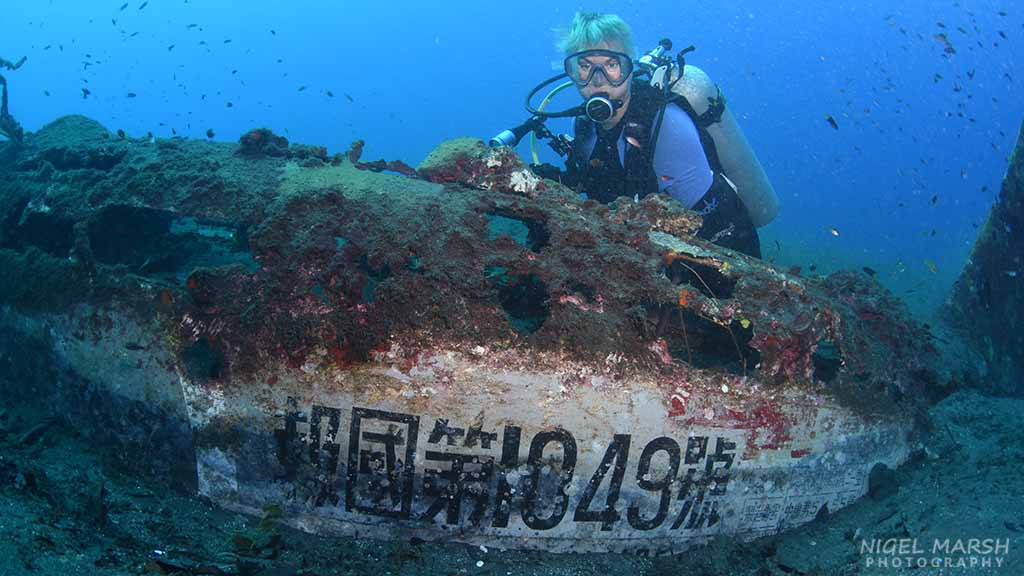
Munda is a very special dive destination, and with direct flights from Brisbane each Saturday, there has never been a better time to visit and dive its unique and wonderful dive sites.



